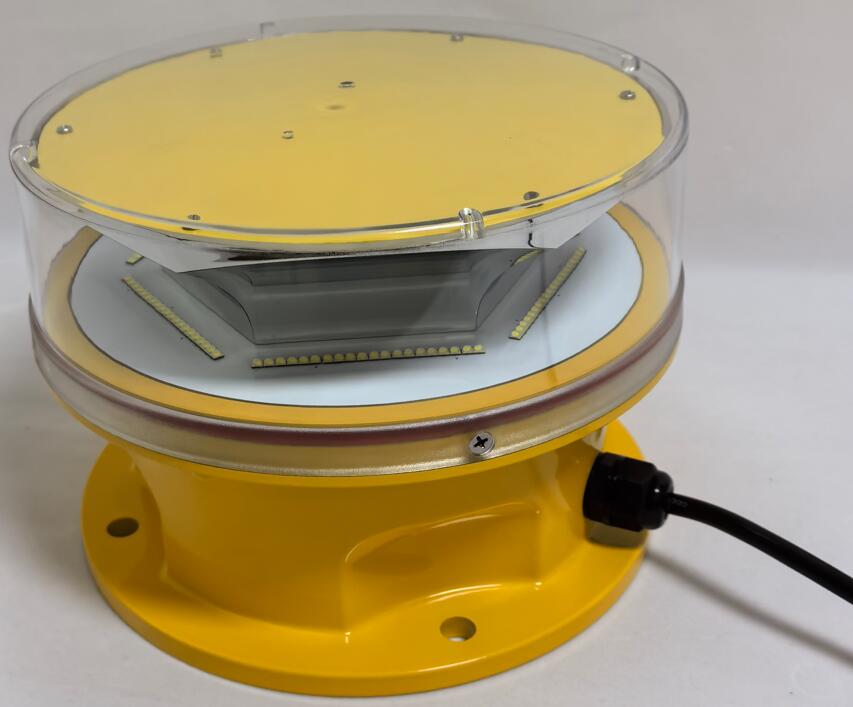Lighting the Future of Flight: The Evolution of LED Aviation Light Technology
In the aviation industry, safety, visibility, and energy efficiency are key considerations in infrastructure design and airspace regulation. Among the many systems supporting these goals, LED aviation light solutions have emerged as the modern standard for visual guidance and hazard marking. From airfields and helipads to obstacle marking on tall structures, LED aviation lights play a critical role in enhancing operational reliability while reducing maintenance burdens.
What Is an LED Aviation Light?
An LED aviation light is a lighting device used for aviation safety and navigation, employing light-emitting diodes (LEDs) as the light source. These lights are installed in a wide range of applications including runway edge lighting, taxiway centerlines, approach lights, helipad perimeter lights, and obstruction lighting for towers, chimneys, wind turbines, and tall buildings.
LED technology offers significant advantages over traditional incandescent or halogen systems. LEDs are solid-state devices that emit light through electroluminescence, producing bright, focused illumination with much greater energy efficiency and service life than older technologies.

Core Applications of LED Aviation Light Systems
LED aviation light systems are designed to ensure visibility and spatial awareness for both manned and unmanned aircraft. Major application areas include:
Airfield Ground Lighting (AGL)
LED lights are used for runway edges, centerlines, touchdown zones, threshold lighting, and taxiway lighting. Their high intensity and clear color output enable precise navigation during takeoff, landing, and taxiing, especially in low-visibility conditions.
| LED aviation light |
Heliports and Vertiports
Perimeter and approach lighting systems for heliports and future urban vertiports are now primarily based on LED technology. These lights offer consistent illumination for vertical takeoff and landing operations, which are often conducted in densely populated areas.
Obstacle Marking
Tall structures such as broadcast towers, wind turbines, and high-rise buildings require marking with aviation lights to prevent aircraft collisions. LED aviation lights serve this role with reliable flashing patterns, long-range visibility, and minimal light pollution.
Marine and Offshore Installations
Offshore platforms and vessels often rely on LED aviation lights to mark their positions for helicopters and low-flying aircraft, particularly in harsh marine environments where durability and longevity are essential.
Advantages of LED Aviation Light Systems
The shift to LED aviation lights is not merely a technological upgrade—it's a transformation in how lighting supports aviation safety and sustainability.
| LED aviation lights |
Energy Efficiency
LED lights consume significantly less energy than incandescent or halogen systems. This is particularly important in locations with limited power infrastructure or off-grid installations.
Extended Lifespan
With operational lives exceeding 50,000 to 100,000 hours, LED aviation lights drastically reduce the frequency of replacements, especially in hard-to-reach or hazardous areas.
Reduced Maintenance Costs
Fewer failures mean fewer maintenance visits, which translates into operational cost savings and improved system availability.
Improved Visibility and Color Accuracy
LEDs produce high-intensity, true-color light that enhances visual cues for pilots. Whether red, green, blue, or white, each color is delivered with clarity and consistency.
Faster Response Time
LEDs reach full brightness almost instantly. This is especially beneficial for flashing or synchronized beacon applications, where timing is critical.
Resilience in Harsh Conditions
LED aviation lights are designed to withstand extreme temperatures, high humidity, vibrations, and corrosive environments—making them ideal for marine, desert, or alpine installations.
Compliance with International Standards
LED aviation light products must meet stringent international standards for visibility, safety, and performance. Key regulatory bodies include:
ICAO (International Civil Aviation Organization)
FAA (Federal Aviation Administration)
EASA (European Union Aviation Safety Agency)
CAP 168 (UK CAA guidelines)
These standards define factors such as light intensity, color, flash rate, beam spread, and installation height. Modern LED aviation lights are typically certified according to these regulations, ensuring global interoperability and compliance.
Smart Features and Integration
Many contemporary LED aviation light systems incorporate smart technology to improve performance and monitoring:
Remote Monitoring: Operators can check light status, performance metrics, and receive failure alerts in real-time through wireless or networked systems.
Solar Power Integration: LED aviation lights are increasingly combined with solar panels and battery storage for independent, sustainable operation in off-grid areas.
Synchronization and Dimming: Advanced control systems enable synchronized flashing patterns for obstacle beacons and adjustable brightness based on ambient lighting or air traffic conditions.
Self-Diagnostics: Some units include automated health checks and reporting, reducing inspection needs and ensuring reliable performance.
Future Trends in LED Aviation Light Technology
As aviation continues to expand, especially in urban air mobility and drone operations, LED aviation lights will play an even more crucial role. Anticipated trends include:
UAM-Compatible Lighting: With the rise of electric air taxis and vertical takeoff aircraft, new lighting configurations and protocols are being developed for rooftop vertiports and urban landing zones.
Data-Driven Maintenance: AI-powered analytics will optimize maintenance cycles based on usage patterns, environmental conditions, and performance data.
Hybrid Lighting Systems: Integration of infrared or near-infrared LEDs for compatibility with night-vision goggles (NVG) used by military and law enforcement pilots.
Interconnected Systems: Smart city infrastructure will increasingly link LED aviation light systems with other air traffic and safety networks, enhancing coordination across urban airspace.
The LED aviation light represents more than just a brighter or longer-lasting light source. It reflects a new generation of aviation safety infrastructure—efficient, intelligent, and adaptable to a changing aerial landscape. Whether guiding commercial jets on a foggy runway or marking the tip of a remote wind turbine, LED aviation lights silently support the safe, orderly movement of aircraft around the globe.
As airspace becomes more dynamic and technology-driven, LED aviation lighting will remain at the heart of visual safety systems, ensuring pilots can always find their way—no matter the time, weather, or terrain.
